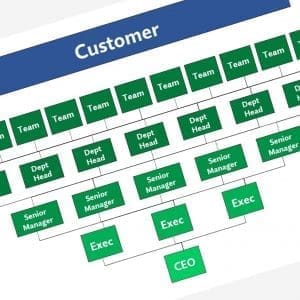I got a chance to read over some Gartner predictions for 2006 (available $ online). One that struck me said that the job market for IT specialists will shrink 40 percent by 2010. Hey, that’s only a few years away! The article makes the point that “… IT people … must have the capacity to move fluidly and effortlessly into multiple projects, disciplines, and processes.”
I like to cite, as an excellent illustration of this idea, the movie Black Hawk Down. There are two military groups represented (Army Rangers and Delta Force), each with highly trained, independent thinkers under separate chains of command. In the heat of battle, any one of the group can pick up a number of different types of weapons, know how to “get productive”, and move the group forward, even with their limited understanding of the mission and current status. There are no pure “managers” – everyone gets their hands dirty.
Also, there are no pure “staff” / infantry. I love the intergroup squabbles where a “manager” / team lead (Ranger) and a member of a separate team (Delta) share short, harsh words about some decisions made a few moments ago. The Delta guy is pointedly questioning the Ranger captain‘s tactics, and the Ranger captain letting the Delta know he is “combat ineffective”. And then, quite suddenly, the discussion is over. The Ranger now asks the Delta for input on the next best move, the Delta makes a good, solid suggestion, and the Ranger carves up both teams and assigns them over. Leadership is situation-specific, there is just enough chain of command “structure” to keep the admin details in place, and business is moved forward at the local level.
There’s a similar point made in Gladwell’s Blink, in the story of Paul Van Riper and his victory in the Millenium Challenge. The commanders in the field are given freedom and responsibility to make the calls as they see fit, without having to check with the brass above, or wait for a bunch of detailed analyses.
Although not a big fan of using armored conflict in my business analogies, I still like the kind of IT organization described by these stories – populated with hands-on, knowledgeable, savvy, engaged people with technical skills and business experience, who can get in the coding / wire pulling / data modeling / process analysis trenches, as well as stand back and make some strategic and tactical decisions.
These are the skills we must expect of ourselves (and encourage & develop in our teams) if we want to “make the cut” described by Gartner.





Comments (0)